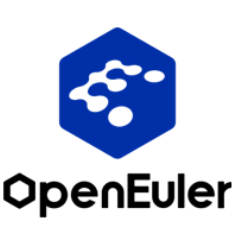MongoDB内存服务器初始化数据与索引的最佳实践
2025-06-29 22:49:43作者:滕妙奇
前言
在使用MongoDB内存服务器(MongoDB Memory Server)进行测试时,经常需要预置测试数据、创建集合和索引。本文将详细介绍如何高效地完成这些初始化操作,特别是针对需要测试唯一索引约束等特殊场景。
核心概念
MongoDB内存服务器的特点
MongoDB内存服务器是一个用于测试的轻量级解决方案,它:
- 自动下载并运行mongod二进制文件
- 使用随机端口(除非显式指定)
- 不包含mongo shell或其他客户端工具
初始化方法
1. 使用Node.js驱动直接操作
推荐使用官方的MongoDB Node.js驱动程序来执行初始化操作:
const { MongoMemoryServer } = require('mongodb-memory-server');
const { MongoClient } = require('mongodb');
async function initTestDB() {
const mongod = await MongoMemoryServer.create();
const uri = mongod.getUri();
const client = new MongoClient(uri);
try {
await client.connect();
const db = client.db();
// 创建集合
await db.createCollection('users');
// 创建索引
await db.collection('users').createIndex({ email: 1 }, { unique: true });
// 插入初始数据
await db.collection('users').insertMany([
{ name: 'Alice', email: 'alice@example.com' },
{ name: 'Bob', email: 'bob@example.com' }
]);
} finally {
await client.close();
}
}
2. 执行外部脚本文件
如果需要复用已有的shell脚本,可以通过以下方式:
const { exec } = require('child_process');
const fs = require('fs');
async function runMongoScript(mongod, scriptPath) {
const uri = mongod.getUri();
const tempFile = `${scriptPath}.tmp`;
// 替换连接字符串
let scriptContent = await fs.promises.readFile(scriptPath, 'utf8');
scriptContent = scriptContent.replace(/mongodb:\/\/.*?\//, `${uri}/`);
await fs.promises.writeFile(tempFile, scriptContent);
return new Promise((resolve, reject) => {
exec(`mongo ${tempFile}`, (error, stdout, stderr) => {
fs.unlink(tempFile, () => {});
if (error) return reject(error);
resolve(stdout);
});
});
}
高级技巧
测试唯一索引冲突
针对需要测试唯一索引冲突的场景,可以这样设计测试用例:
describe('Unique Index Tests', () => {
let mongod;
let client;
beforeAll(async () => {
mongod = await MongoMemoryServer.create();
client = new MongoClient(mongod.getUri());
await client.connect();
const db = client.db();
await db.collection('users').createIndex({ email: 1 }, { unique: true });
});
it('should throw error on duplicate email', async () => {
const db = client.db();
await db.collection('users').insertOne({ email: 'test@example.com' });
await expect(
db.collection('users').insertOne({ email: 'test@example.com' })
).rejects.toThrow();
});
afterAll(async () => {
await client.close();
await mongod.stop();
});
});
注意事项
-
性能考虑:在beforeEach中初始化数据会比beforeAll更耗时,但能保证测试隔离性
-
环境依赖:使用外部脚本需要确保测试环境已安装mongo shell工具
-
数据清理:测试完成后应确保清理测试数据,避免影响后续测试
-
错误处理:初始化过程中应妥善处理可能出现的错误
总结
通过MongoDB Node.js驱动程序直接操作是最可靠的方式,它不依赖外部工具,能更好地集成到测试流程中。对于复杂的初始化场景,可以将初始化逻辑封装为可复用的模块,提高测试代码的可维护性。
对于从Docker环境迁移过来的测试,建议逐步将shell脚本转换为Node.js代码,这样能获得更好的类型检查和错误提示,同时减少环境依赖。
登录后查看全文
热门项目推荐
相关项目推荐
 kernelopenEuler内核是openEuler操作系统的核心,既是系统性能与稳定性的基石,也是连接处理器、设备与服务的桥梁。C037
kernelopenEuler内核是openEuler操作系统的核心,既是系统性能与稳定性的基石,也是连接处理器、设备与服务的桥梁。C037 Kimi-K2-ThinkingKimi K2 Thinking 是最新、性能最强的开源思维模型。从 Kimi K2 开始,我们将其打造为能够逐步推理并动态调用工具的思维智能体。通过显著提升多步推理深度,并在 200–300 次连续调用中保持稳定的工具使用能力,它在 Humanity's Last Exam (HLE)、BrowseComp 等基准测试中树立了新的技术标杆。同时,K2 Thinking 是原生 INT4 量化模型,具备 256k 上下文窗口,实现了推理延迟和 GPU 内存占用的无损降低。Python00
Kimi-K2-ThinkingKimi K2 Thinking 是最新、性能最强的开源思维模型。从 Kimi K2 开始,我们将其打造为能够逐步推理并动态调用工具的思维智能体。通过显著提升多步推理深度,并在 200–300 次连续调用中保持稳定的工具使用能力,它在 Humanity's Last Exam (HLE)、BrowseComp 等基准测试中树立了新的技术标杆。同时,K2 Thinking 是原生 INT4 量化模型,具备 256k 上下文窗口,实现了推理延迟和 GPU 内存占用的无损降低。Python00 kylin-wayland-compositorkylin-wayland-compositor或kylin-wlcom(以下简称kywc)是一个基于wlroots编写的wayland合成器。 目前积极开发中,并作为默认显示服务器随openKylin系统发布。 该项目使用开源协议GPL-1.0-or-later,项目中来源于其他开源项目的文件或代码片段遵守原开源协议要求。C00
kylin-wayland-compositorkylin-wayland-compositor或kylin-wlcom(以下简称kywc)是一个基于wlroots编写的wayland合成器。 目前积极开发中,并作为默认显示服务器随openKylin系统发布。 该项目使用开源协议GPL-1.0-or-later,项目中来源于其他开源项目的文件或代码片段遵守原开源协议要求。C00 PaddleOCR-VLPaddleOCR-VL 是一款顶尖且资源高效的文档解析专用模型。其核心组件为 PaddleOCR-VL-0.9B,这是一款精简却功能强大的视觉语言模型(VLM)。该模型融合了 NaViT 风格的动态分辨率视觉编码器与 ERNIE-4.5-0.3B 语言模型,可实现精准的元素识别。Python00
PaddleOCR-VLPaddleOCR-VL 是一款顶尖且资源高效的文档解析专用模型。其核心组件为 PaddleOCR-VL-0.9B,这是一款精简却功能强大的视觉语言模型(VLM)。该模型融合了 NaViT 风格的动态分辨率视觉编码器与 ERNIE-4.5-0.3B 语言模型,可实现精准的元素识别。Python00 GLM-4.7GLM-4.7上线并开源。新版本面向Coding场景强化了编码能力、长程任务规划与工具协同,并在多项主流公开基准测试中取得开源模型中的领先表现。 目前,GLM-4.7已通过BigModel.cn提供API,并在z.ai全栈开发模式中上线Skills模块,支持多模态任务的统一规划与协作。Jinja00
GLM-4.7GLM-4.7上线并开源。新版本面向Coding场景强化了编码能力、长程任务规划与工具协同,并在多项主流公开基准测试中取得开源模型中的领先表现。 目前,GLM-4.7已通过BigModel.cn提供API,并在z.ai全栈开发模式中上线Skills模块,支持多模态任务的统一规划与协作。Jinja00 agent-studioopenJiuwen agent-studio提供零码、低码可视化开发和工作流编排,模型、知识库、插件等各资源管理能力TSX0114
agent-studioopenJiuwen agent-studio提供零码、低码可视化开发和工作流编排,模型、知识库、插件等各资源管理能力TSX0114 Spark-Formalizer-X1-7BSpark-Formalizer 是由科大讯飞团队开发的专用大型语言模型,专注于数学自动形式化任务。该模型擅长将自然语言数学问题转化为精确的 Lean4 形式化语句,在形式化语句生成方面达到了业界领先水平。Python00
Spark-Formalizer-X1-7BSpark-Formalizer 是由科大讯飞团队开发的专用大型语言模型,专注于数学自动形式化任务。该模型擅长将自然语言数学问题转化为精确的 Lean4 形式化语句,在形式化语句生成方面达到了业界领先水平。Python00
项目优选
收起
deepin linux kernel
C
26
10
OpenHarmony documentation | OpenHarmony开发者文档
Dockerfile
433
3.29 K
本项目是CANN提供的数学类基础计算算子库,实现网络在NPU上加速计算。
C++
689
352
Ascend Extension for PyTorch
Python
237
271
暂无简介
Dart
690
162
Nop Platform 2.0是基于可逆计算理论实现的采用面向语言编程范式的新一代低代码开发平台,包含基于全新原理从零开始研发的GraphQL引擎、ORM引擎、工作流引擎、报表引擎、规则引擎、批处理引引擎等完整设计。nop-entropy是它的后端部分,采用java语言实现,可选择集成Spring框架或者Quarkus框架。中小企业可以免费商用
Java
9
1
仓颉编程语言运行时与标准库。
Cangjie
143
881
React Native鸿蒙化仓库
JavaScript
266
327
openJiuwen agent-studio提供零码、低码可视化开发和工作流编排,模型、知识库、插件等各资源管理能力
TSX
211
114
仓颉编译器源码及 cjdb 调试工具。
C++
138
869